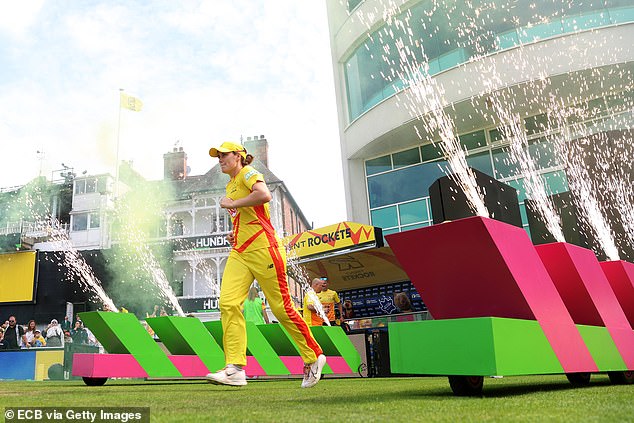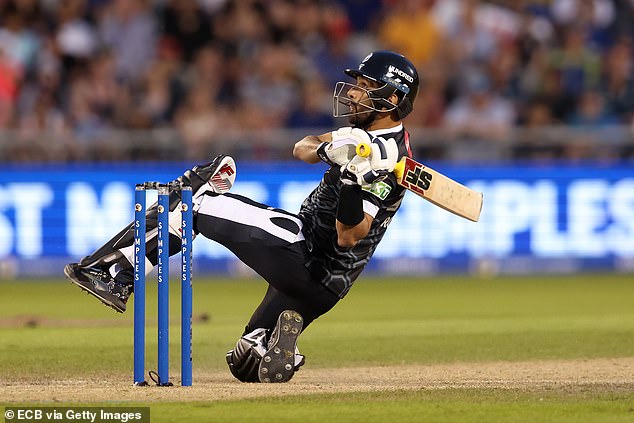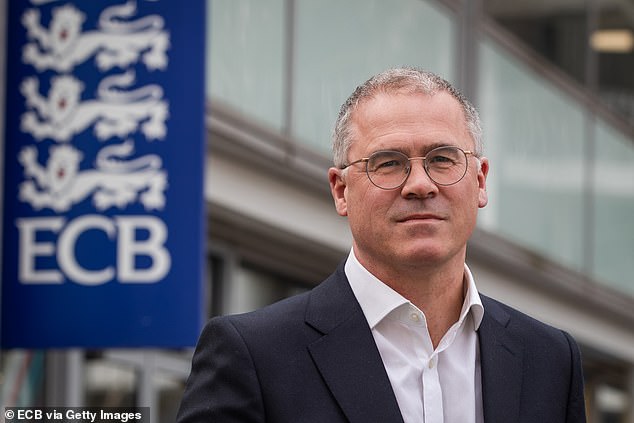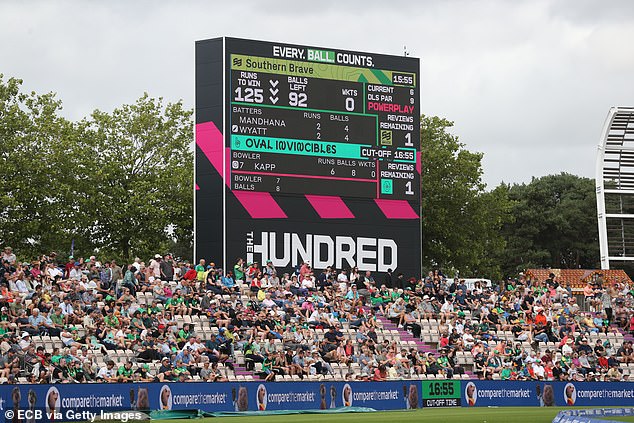Six years after its original launch, the crowds are down and there are still not enough of the world’s best players…so can foreign money make the Hundred a worldwide hit?
It is being heralded by marketing bosses as cricket’s ‘Premier League moment’. For sceptics, it is yet another false start in its short history. Either way, the one thing everyone agrees on is that the Hundred is at a critical point. Change is coming.
This month, the ECB is inviting potential investors from Asia and the United States to help make its 100-ball-per-side competition the second best short format in the world after the Indian Premier League.
Sound familiar? It should. It was the campaign pitch prior to launch six years ago. So how did we end up here again, 10 days into season four?
Partly it’s because momentum hasn’t been built. Covid undoubtedly had something to do with it, pushing the inaugural year back by 12 months to 2021. But the move to private investment is a recognition by the governing body that they now need to expand their vision to showcase global superstars to a new, ethnically diverse, family audience.
Stuart Broad, now part of the Sky Sports commentary team, says it has fulfilled its remit: “The Hundred is a really impressive concept, with both the men’s and women’s games growing. What we’ve seen grow year on year is the demographic of the audience. A lot of my friends take younger children to watch because of the accessibility.
The involvement of big names like Dawid Malan (pictured) helps to sell tickets for the Hundred

Stuart Broad says the Hundred has helped develop men’s and women’s sport

The ECB is busy courting potential investors from Asia and the US in a bid to make its 100-ball-a-side competition the second best short format in the world after the IPL
‘You only have to go to the ground to see the connection the fans have with the teams. Come to Trent Bridge and you’ll see kids wearing the yellow Rockets shirt, and where I live you’ll see a lot of Oval Invincibles merchandise.’
The bond between players and fans is essential to the future of any sport, so it is interesting that the ECB is keen to embrace the tribalism of football and encourage supporters not just to go to home games but to develop a sense of purpose that makes them want to travel to away games.
Ironically, loyal fans from deprived counties will be doing just that this month – flocking to outdoor grounds to watch their club’s emerging talent in the Metro Bank One Day Cup.
Such loyalty cannot be bought or subsidized. The common practice of giving mothers, boys and girls free entry to the Hundred achieved the desired demographic, but the problem with giving away tickets is that people see little value in it. Offering days out to casual spectators is not building a fan base.
MailSport has heard from a number of Hundred teams that fewer prizes were awarded this summer, which is also reflected in the turnout.
This week Trent Rockets welcomed 12,363 visitors to the Birmingham Phoenix. Five years ago that was around Nottinghamshire’s average home attendance for Twenty20.
On Thursday, 15,716 attended London Spirit’s match against Welsh Fire at Lord’s. In August 2019, a Vitality Blast match there between Middlesex and Hampshire attracted 27,000. The first one 20 years ago attracted 26,500.
There is no doubt that matching matches benefits women’s football, but attendances appear to be declining, despite the ECB claiming a 96 percent capacity occupancy rate last year.

The connection between players and fans is crucial to the future of any sport, so it is interesting that the ECB is keen to embrace football’s tribalism.

Australian Test captain Pat Cummins (pictured) didn’t consider the Hundred when he signed a deal with Major League Cricket
It’s a harder sell without the best players in the world. When Australian Test captain Pat Cummins signed a four-year contract with Major League Cricket, the United States’ T20 competition, he said he hadn’t even considered the Hundred.
It felt like a hammer blow, hence the rush to get extra money from investors into the competition. “There is a chasing pack behind the IPL which includes the Hundred, but we need to act quickly to stay there and make sure others don’t catch us,” said Vikram Banerjee, the ECB’s chief operating officer.
To achieve this, it must be recognised that wages will need to rise ahead of a ‘new’ Hundred in 2025. The current top bracket of £125,000 per year is no longer sufficient to entice cricketers with a choice of 17 ICC-sanctioned short tournaments.
The merry-go-round of foreign players at the start of the competition showed where the priorities lie.
Mitchell Santner, himself a replacement player, Haris Rauf and Rashid Khan all postponed their season debuts to remain in the States, all having to be temporarily replaced by players involved in county cricket.
ECB bosses are in constant discussions to avoid overlaps with the MLC and the Caribbean Premier League, which starts on August 30 this year, and are convinced that it is in everyone’s interest to work together.
However, ECB chief Richard Gould is optimistic about “not just competing, but winning” the territorial duel with the transatlantic rivals.
To do that, something will have to happen. England’s Test players missed the opening matches due to a clash with the West Indies series. The majority will now play in the run-up to the final of the Hundred on August 18.

ECB chief Richard Gould (pictured) is optimistic about ‘not just competing, but winning’ the territorial duel with their transatlantic rivals

Vikram Banerjee, ECB’s chief operating officer, says it is important to secure investment quickly
“You want to get the most recognisable names in there,” Broad said. “I understand the reasons why they haven’t done that in recent years — an Ashes series, a build-up to a World Cup — but ultimately think back to when you fell in love with the game of cricket and it started with watching a player put on a great show. With better quality players you’re more likely to inspire and generate enthusiasm for the game.
‘It’s great to have someone like Ben Stokes teaming up with Freddie Flintoff at Northern Superchargers this year. It’s an iconic duo working together.’
At the other end of the spectrum, we can only wonder what IPL owners and NFL team representatives thought of Daniel Worrall sending 10 consecutive dot balls to Tom Kohler-Cadmore early in the Spirit v Fire clash at Lord’s.
But the ECB hopes to convince them to invest in an eight-team tournament, likely to be expanded to 10 teams and then expanded again to Twenty20 in 2028.
It seems less complicated to sell the format that will be played at the Olympic Games in Los Angeles in four years to Americans. Moreover, there is no reason to change the brand name.

There will be obstacles to overcome when it comes to getting money out of India
Negotiations to sell the teams will begin next month in a process Banerjee describes as “a bit like a very strange speed dating” that involves potential investors sitting down with potential partners to assess compatibility.
The ECB’s Gemini project, which will see a 49 percent stake in the eight teams sold, follows the rejection two years ago of a £300 million bid from the Bridgepoint Group for a 75 percent stake.
Maintaining control over the length and position of the Hundred window is paramount for a national governing body aiming to maintain the pre-eminence of Test cricket.
There will be hurdles to overcome to secure money from India. IPL owners with tentacles already spread to other territories are unlikely to accept silent partnerships, and while the purchase of the 51 per cent currently reserved for county clubs tied to city venues will be permitted, these will not be straightforward transactions.
Gould stressed that such sales must be “long-term value propositions” that benefit grassroots, youth and women’s cricket and enhance the fan experience, including through stadium improvements.
